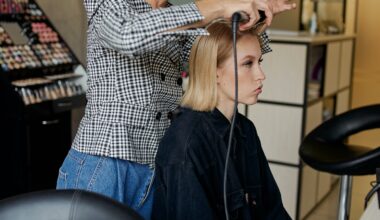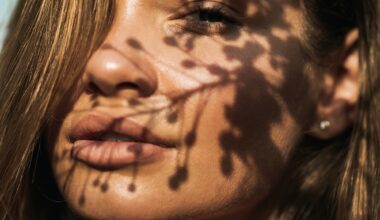Are you new to the world of natural hair care? If so, then this article is for you! Natural hair can be a daunting journey for those just getting started. To make it easier, here are 10 natural hair tips for beginners that will help you get off on the right foot. From understanding your curl pattern to using the proper products – this guide is filled with all the information and advice you need to start your natural hair journey. Let’s dive in!
Tip 1: Moisturize Daily
Moisturizing your hair is a crucial step to maintaining healthy and vibrant natural hair. It is important to keep your hair hydrated because dry hair can lead to breakage, split ends, and overall damage. To properly moisturize your hair, you should use a leave-in conditioner or oil daily. These products will help retain moisture and protect your strands from environmental factors that can cause dryness.
When selecting a moisturizer for your natural hair, it’s important to choose one that fits the specific needs of your hair type. If you have kinky or coily hair, look for heavier oils like castor oil or shea butter that will penetrate deeply into the strands. For those with wavy or curly hair, lighter oils like argan oil or grapeseed oil may be more suitable. Additionally, using a deep conditioning treatment once a week can also help maintain moisture levels in your strands.
Overall, incorporating daily moisturizing into your natural hair routine can greatly benefit its health and appearance in the long run. So make sure you prioritize this step in order to achieve luscious locks!
Tip 2: Use the Right Tools

One key aspect of maintaining healthy natural hair is using the right tools. This means investing in quality combs, brushes, and styling tools that are suitable for your hair type. For example, if you have tightly coiled hair, try using a wide-tooth comb to detangle your hair while it’s wet. If you’re looking to straighten your hair, opt for a ceramic flat iron that heats up evenly and has adjustable temperature settings.
Another important tool to consider is a satin or silk pillowcase or bonnet. These materials help reduce friction between your hair and cotton-based fabrics, which can lead to breakage and frizz. Additionally, using a microfiber towel or t-shirt to dry your hair can also prevent damage since they are gentler on the strands compared to regular towels.
Investing in the right tools may seem like an added expense; however, it can save you time and money in the long run by preventing damage and promoting healthy growth. Plus, having quality tools will make it easier for you to achieve desired styles with minimal effort!
Tip 3: Avoid Heat Styling
Heat styling is one of the biggest culprits when it comes to damaging natural hair. It can cause breakage, dryness, and even alter your hair’s curl pattern permanently. Therefore, it’s important to avoid using heat styling tools as much as possible. If you must use them, make sure to apply a heat protectant beforehand and keep the temperature low.
Instead of heat styling, try opting for protective styles that do not require any heat manipulation such as braids or twists. These styles not only help prevent damage but also allow your hair to grow without experiencing breakage from daily manipulation.
Another alternative is air-drying your hair instead of blow-drying it. This will help retain moisture in your tresses and reduce the chances of frizz or damage caused by high temperatures. With these tips in mind, you’ll be on your way to healthy natural locks in no time!
Tip 4: Avoid Overwashing
Overwashing your hair can lead to dryness and breakage, which is not ideal for anyone, let alone those with natural hair. As tempting as it may be to wash your hair every day, doing so can strip away the natural oils that keep your strands healthy and moisturized. Instead, aim to wash your hair once or twice a week using a gentle shampoo that won’t cause any further damage.
If you’re worried about keeping your hair clean in between washes, consider using a dry shampoo or co-washing instead. Dry shampoos work by absorbing excess oil from your scalp without stripping away moisture from the rest of your strands. Meanwhile, co-washing involves using conditioner instead of shampoo to cleanse and nourish your hair without drying it out.
In addition to avoiding overwashing, it’s important to avoid using hot water when washing or rinsing your hair. Hot water can also strip away natural oils and lead to dryness and breakage over time. Instead, opt for lukewarm water when washing and rinse with cool water at the end of your shower to seal in moisture and promote healthy growth.
Tip 5: Detangle Properly
Detangling natural hair can be a daunting task, especially if you don’t have the right tools or know-how. It’s important to detangle your hair properly to prevent breakage and damage. Start by sectioning your hair into manageable parts, then use a wide-tooth comb or detangling brush to gently remove any knots or tangles. Always start at the ends of your hair and work your way up to the roots.
Another helpful tip is to use a detangling spray or conditioner to make it easier to comb through your hair. You can also apply some oil or butter to help lubricate the strands and prevent them from snagging on each other. Be patient and take your time when detangling, as rushing through this process can lead to more tangles and breakage.
Every person’s hair is unique, so what works for one person may not work for another. Try different techniques and products until you find what works best for you and always listen to your scalp and hair needs. With practice, patience, and proper care, you can achieve healthy, manageable natural hair!
Tip 6: Deep Condition Regularly
Deep conditioning is a crucial step in maintaining healthy natural hair. It helps to restore moisture, prevent breakage, and improve the overall texture of your hair. For best results, it is recommended that you deep condition your hair at least once a week. You can use a store-bought deep conditioner or make your own using natural ingredients such as avocado, honey, and coconut oil.
To deep condition your hair, start by washing it with a gentle shampoo to remove any buildup. Apply the deep conditioner generously to your hair from roots to tips and cover with a plastic cap or towel. Leave the conditioner on for at least 30 minutes before rinsing out thoroughly with warm water.
Remember that over-conditioning can lead to limp, greasy hair so be sure not to overdo it. Pay attention to how often you need to deep condition depending on the needs of your individual hair type and adjust accordingly. By incorporating regular deep conditioning into your routine, you’ll see softer, healthier strands in no time!
Tip 7: Invest in Quality Products
Investing in quality products is key when it comes to maintaining healthy natural hair. High-quality products can make a significant difference in the overall health and appearance of your hair. When shopping for hair care products, it’s important to consider the ingredients used in each product. Look for products that are free from harsh chemicals, sulfates, and parabens as they can strip your hair of its natural oils and cause damage.
Investing in quality styling tools is also crucial when trying to maintain healthy natural hair. Poorly made tools can cause breakage, split ends or even damage your scalp which may lead to further complications down the line. Invest in high-quality brushes, combs and styling tools like curling irons or flat irons that don’t use excessively high temperatures as they can be damaging to your tresses.
Lastly, investing in quality protective gear such as silk scarves or bonnets will help protect your strands while you sleep at night. Cotton pillowcases can absorb moisture from your hair leading to dryness and tangling which leads to irreversible damage over time. A good silk scarf will keep your tresses protected while you get some much-needed rest!
Tip 8: Protect Hair at Night
One of the most important things you can do to protect your natural hair is to protect it at night. Sleeping on cotton pillowcases or without any protection can cause friction and breakage, leading to split ends and frizz. To avoid this, invest in a satin or silk pillowcase, which will reduce friction and keep your hair smooth.
Another option is to use a silk or satin bonnet or scarf while sleeping. This not only protects your hair from friction but also helps retain moisture that can be lost from sleeping on cotton fabric. Additionally, using a protective style such as braids or twists before bed can help keep your hair secure and prevent tangling.
Don’t forget that taking care of your natural hair requires consistent effort both during the day and at night. Protecting it while you sleep not only prevents damage but also contributes to maintaining healthy and strong locks.
Tip 9: Embrace Your Texture
Embracing your hair texture is one of the most important things you can do when starting out on your natural hair journey. It’s crucial to understand that not all hair textures are created equal, and what works for someone else may not necessarily work for you. That being said, learning to love and appreciate your unique texture is key. Whether you have tight coils or loose waves, there’s beauty in every strand.
One way to embrace your texture is by experimenting with different styles and products that cater specifically to your hair type. For instance, if you have 4C hair, it may benefit from thicker creams and butters that help lock in moisture. On the other hand, looser curls may prefer lighter leave-in conditioners or curl-defining gels. Don’t be afraid to try new things until you find what works best for you.
Embracing your texture isn’t just about physical appearance – it’s also about self-acceptance and confidence. As you learn to care for and style your natural hair, take pride in the fact that it’s uniquely yours. With time and patience, you’ll discover a world of possibilities within the beautiful complexity of your tresses.
Tip 10: Seek Professional Advice
Seeking professional advice is essential when you’re starting with natural hair. Professional advice can help you understand your hair type, assess its condition, and develop a personalized hair care regimen based on your needs. A hairstylist or a trichologist can also provide valuable insights into the best products to use for your hair type.
Professional advice can also prevent you from making common mistakes that could damage your natural hair. For instance, some people may use too much heat on their hair, causing it to become brittle and break easily. A hairstylist will advise on how often to trim the ends of the hair and how to avoid excessive styling methods that could cause loss of curl pattern.
Finally, seeking professional advice is a great way to learn about new trends in natural hairstyles and techniques that can keep your locks healthy and vibrant. So if you’re serious about embracing the journey towards healthier natural hair, be sure to seek out expert guidance along the way!
Conclusion
In conclusion, natural hair care can be a daunting journey for beginners, but it is worth the effort. With patience and consistency, you can achieve healthy and beautiful natural hair. Remember that everyone’s hair is different and requires a unique approach. Therefore, do not be discouraged if what works for someone else does not work for you.
Additionally, always keep your hair moisturized to prevent dryness and breakage. Use oils such as coconut oil or castor oil to seal in moisture after applying leave-in conditioner or water. Also, avoid heat styling tools as frequent use damages your hair’s integrity and may lead to irreversible damage.
Finally, embrace your natural texture and experiment with styles that make you feel confident and comfortable. Do not let societal standards dictate how you should wear your hair; instead, celebrate its versatility and uniqueness. Keep these natural hair tips for beginners in mind as you embark on your hair journey!





